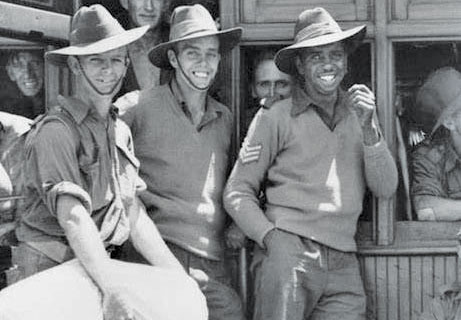As the Voice debate has raged across the region, as Australia prepares to decide on a constitutional change, unfortunately the voice of one fighter for Aboriginal rights, and a warrior for Australia, long-term St Marys resident, Captain Reg Saunders, is largely forgotten.
Captain Reginald Walter Saunders’ name is noted in the nation’s military history as the first Aborigine to be commissioned as an officer in the Australian Army.
As a campaigner for Aboriginal rights, he received Royal acknowledgement.
In the military he earned the admiration and loyalty of the men with whom he served.
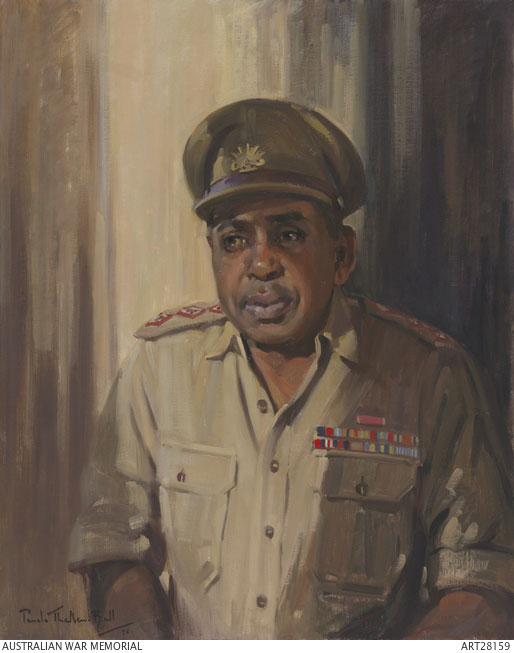
“We would follow him to the ends of the earth,” former sergeant and author Jack Gallaway, who served under Reg Saunders in Korea, said, “and we would bring back dead or alive anyone who stood in his way”.
On September 3, 1939, along with a stunned nation, Reg Saunders listened on radio as Prime Minister Robert Menzies declared Australia at war with Germany.
On ANZAC eve, 1940, 20-year-old Reg enlisted in the Australian Army. As Private Saunders, G. W., he underwent six months basic training at Puckapunyal Army camp in Victoria, made Lance Corporal within six weeks and sergeant in three months.
Assigned to the 2/7th Battalion he embarked for North Africa in January 1941. There he went into combat for the first time, in the desert campaigns of Bardia and Tobruk, against the Axis forces.
He recounted the experience of coming under fire for the first time.
“You couldn’t have a more terrifying experience than have a bloody aero – three aeroplanes – coming straight at you, you know about 200 yards off, firing,” he told interviewer Peter Read for the Keith Murdoch Sound Archive of Australia in the War of 1939-1945, January 13 1989.
“You could see the bullets coming – zip – dirt – little puffs of dirt – and you knew bloody well that they were bullets hitting the ground coming towards you – about 250–300 miles an hour.”
In April, 1941, his battalion landed on the Greek Island of Crete, at the start of that disastrous campaign.
The 17,000-strong Allied force faced an impossible task, against a well-equipped and trained German invasion army, and the deployment of paratroopers and gliders, backed by fighter aircraft,
The Crete campaign ended with the evacuation of most of the British and New Zealand troops, but three Australian battalions surrendered after the British commander failed to advise the Australians of the evacuation.
Saunders stayed behind, and for the next 11 months with his comrades, fought a guerilla war against the Germans.
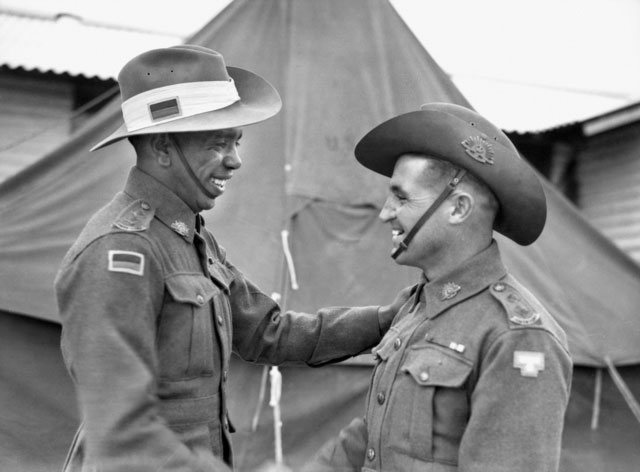
He had some close capture encounters, but he credited his dark skin colour, his tattered and dishevelled clothing, and his inbred Aussie larrikinism for one escape.
“We’d been running wild there for about three months when I went into an outdoor tavern to get a cup of coffee,” he recounted during one of his conversations, with fellow soldier and author Jack Gallaway.
“I turned around and these three German troops walked in, sat down at a table, blocking my way out.
“I pulled out my tobacco pouch, rolled a cigarette, and kept a watchful eye on them.
“I reckon they thought I was a Cretan civilian, a grubby looking farmer or such.
“Anyway, I decided to get out, put the cigarette in my mouth, walked over to their table and indicated I needed a light.
“One chap laughed, pulled out a Zippo lighter, lit my smoke, and I just walked away.”
He eventually escaped Crete to rejoin his battalion, to fight in the Aitape-Wewak and Wau campaigns of 1943-44 in New Guinea.
Reg Saunders’ leadership under fire earned a recommendation by his commanding officer for “officer” training. He returned home and after the six week course at Seymour in Victoria, in December 1944, returned to New Guinea to take over command of the battalion’s number 10 platoon.
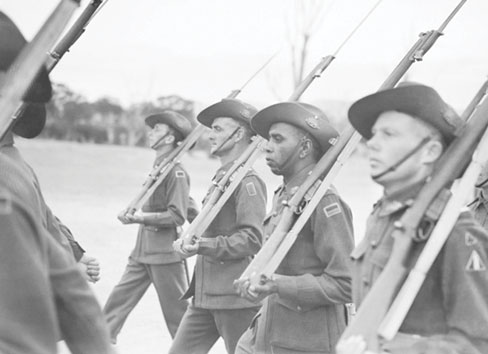
With peace declared, and after being denied a place in the British Commonwealth Occupation Force to go to Japan in 1945, he resigned his commission, came home, battling to try to find permanency, and denied a “soldier’s settlement” or any retraining and educational programmes offered to his fellow soldiers, because of his Aboriginality.
Again war would intervene, with the call for volunteers to go to Korea after the communist North crossed the 38th Parallel on June 25, 1950, to invade South Korea.
Australian recruiters wanted only battle hardened WWII veterans for K Force, being rapidly assembled in 3 Battalion of the Royal Australian Regiment, among them Lieutenant Reg Saunders and Sergeant Jack Gallaway.
The Battalion fought the major campaigns of the war, and at Kapyong on April 24, 1951, 2,800 soldiers of 3RAR and Canadian troops turned back a Chinese army division of 10,600 men. The Battalion received the United States Presidential Citation, worn to this day by members of the unit.
Soon after Kapyong, Lieutenant Saunders and three of his NCOs received a four day Rest and Recreation pass to go to Tokyo. The trip began well, but ended badly.
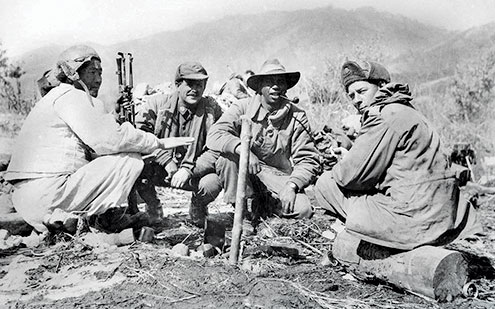
During a night on the town the quartet made its way into an American Army run bar, looking for a last drink or two.
As they walked in one of American soldiers yelled: “Get that nigger out of here. We don’t serve his kind here.”
Big mistake! Jack Gallaway recalled the incident this way: “Sir,” he said very politely to Reg Saunders, “best you wait outside for us”.
Saunders said nothing but left.
“Right yanks, none of you is worthy of licking the dirt off that man’s boots,” Gallway said, throwing the first punch of what became an all-in brawl. The trio took on all comers, leaving a number of the Americans unconscious, the battle raging across the bar, bringing the place to a shambles.
In 1953 the Federal Government refused an RSL request that Saunders be included in the Australian contingent at the coronation of Queen Elizabeth, and while he shrugged off the snub he commented that the soldiers he served with always treated him as an equal.
After jobs in Victoria, he eventually settled in St Marys in 1959, and in the wake of his marriage break-up, secured and set up a family home with Patricia Montgomery until their marriage on November 17, 1979.
He joined the St Marys RSL and in 1962 was elected president of the Sub-Branch.
Then in 1969 the Federal Government appointed him to the Department of Aboriginal Affairs, he moved to Canberra and achieved much success in assisting indigenous families.
In 1971 the Queen awarded him an MBE, and in 1985 he joined the Council of the Australian War Memorial.
Captain Reginald Walter Saunders, MBE, suffered heart disease, and died in Canberra on March 2, 1990, leaving a legacy of 10 children, and a reputation as a fighter for his people, a warrior for his country, a revered Australian Digger.

